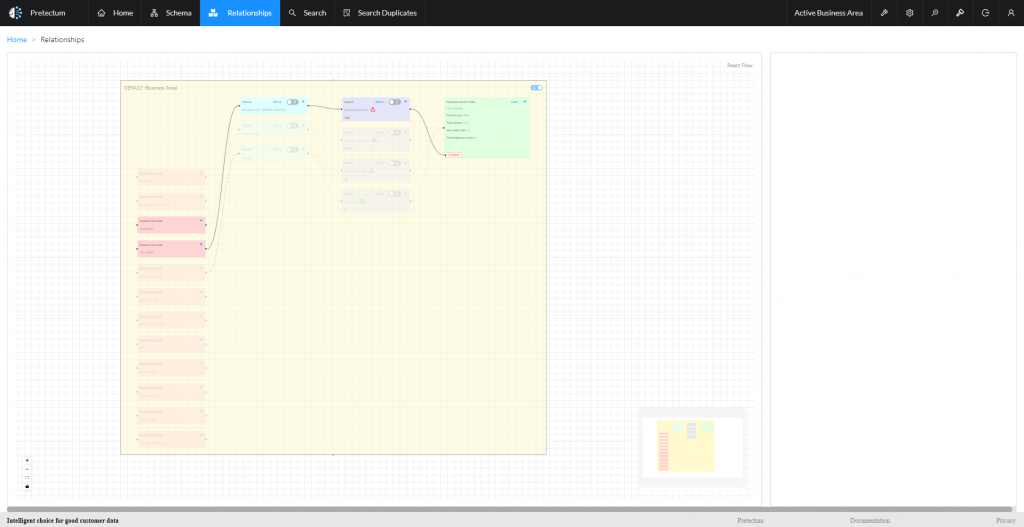Digital transformation has become more than just a buzzword; it is a strategic imperative for companies looking to stay competitive and relevant.
At the heart of this transformative journey lies the effective management of customer master data. Customer Master Data Management (CMDM) is a critical component that enables businesses to harness the power of customer data, driving innovation and fostering sustainable growth.
Customer Master Data Management refers to the processes, technologies, and policies that organizations implement to create and maintain a comprehensive and accurate view of their customer data across the enterprise.
Customer data encompasses a wide range of information, including profiles, contact details, aggregated transaction history, preferences, and summarised interactions. The centralization and standardization of this information through CMDM serve as the foundation for various business functions, empowering organizations to make informed decisions and deliver personalized experiences.
Digital transformation is an integration of digital technologies into all aspects of a business, fundamentally changing how it operates and delivers value to customers. In the early forms, this transformation focused primarily on automating manual processes and enhancing operational efficiency. However, as businesses have matured in their digital endeavors, the focus has shifted towards leveraging data and technology to drive innovation, enhance customer experiences, and create new business models.
Customer data is a modern form of organizational currency that fuels innovation and growth. CMDM acts as an anchoring capability, ensuring that customer data, this most valuable asset for many organizations, is accurate, consistent, and readily accessible as required. This is particularly crucial in an environment where businesses are constantly collecting data from various touchpoints, such as online transactions, social media interactions, and customer service inquiries.
CMDM enables organizations to break down silos and create a unified, 360-degree view of the customer. This holistic perspective is essential for understanding customer behavior, preferences, and expectations. Armed with this knowledge, businesses can design targeted strategies, personalized marketing campaigns, and tailored products or services that resonate with their customer base.
One of the primary drivers of digital transformation is the desire to enhance customer experience. CMDM plays a pivotal role in achieving this goal by providing a single, reliable source of truth about each customer. This enables businesses to deliver consistent and personalized experiences across all touchpoints, be it through digital channels, in-store interactions, or customer support.
When a customer engages with a brand through multiple channels—website, mobile app, or in-store—the Pretectum CMDM system ensures that the customer’s information and preferences (if stored) are synchronized, in real time. This seamless integration enhances customer interactions, fostering a sense of continuity and recognition. In turn, this contributes to increased customer satisfaction, loyalty, and advocacy.
CMDM provides a centralized repository of customer data, enabling business leaders to make informed decisions based on a comprehensive understanding of customer behavior, market trends, and competitive landscapes.
CMDM also facilitates the integration of advanced analytics, artificial intelligence, and machine learning into business processes. By leveraging these technologies, organizations can uncover hidden patterns, predict customer preferences, and identify new opportunities for innovation. CMDM can enable a retailer, for example, to analyze purchasing patterns and recommend personalized product offerings, enhancing the overall shopping experience.
The reliance on customer data for strategic decision-making is another key characteristic of digital transformation, ensuring regulatory compliance and data security cannot be overstated. CMDM can act as a safeguard, helping organizations adhere to data protection regulations by providing tools for data governance, consent management, and data lineage tracking.

CMDM also enhances data security by centralizing control over customer information. Instead of dispersed and potentially vulnerable data repositories, CMDM consolidates customer data in a secure environment, reducing the risk of data breaches and unauthorized access. This not only protects the interests of customers but also safeguards the reputation and trust of the business.
While the benefits of CMDM in digital transformation are clear, implementing an effective CMDM strategy comes with its own set of challenges. One of the primary obstacles is the complexity of integrating CMDM systems with existing legacy systems and diverse data sources. Organizations often struggle to create a seamless flow of data across departments and technologies.
Another challenge lies in ensuring data quality and accuracy. Inaccurate or outdated customer information can lead to misguided business decisions and erode customer trust. Therefore, organizations must invest in robust data quality management processes and tools to cleanse, standardize, and validate customer data continuously.
As businesses navigate the complexities of the modern digital landscape, the ability to harness the power of customer data emerges as a key differentiator. CMDM serves as a key enabler for organizations to create a unified view of their customers, drive personalized experiences, and make informed decisions that fuel innovation and growth.
To embark on a successful digital transformation journey, organizations must recognize CMDM as a strategic imperative and invest in the necessary processes, technologies, and expertise. By doing so, they can unlock the full potential of their customer data, positioning themselves at the forefront of innovation and competitive advantage in the digital age.


